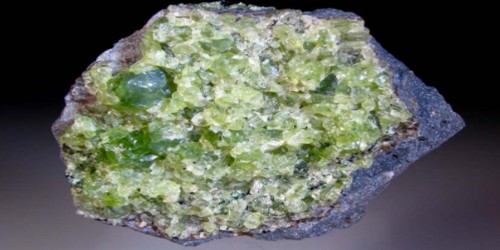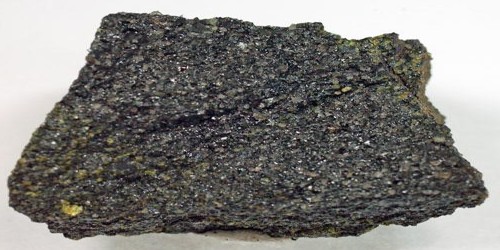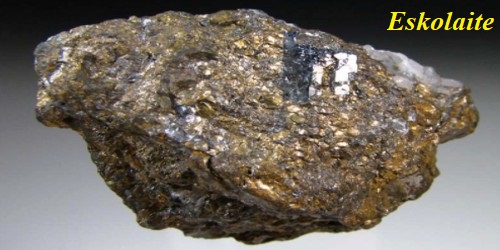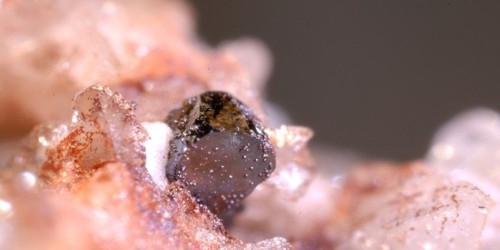Forsterite (Formula- Mg2SiO4) is the magnesium-rich end-member of the olivine solid solution series. It is a crystalline magnesium silicate. It is best known for having, like the other magnesium silicate, clinoenstatite is an extremely low electrical conductivity. It is isomorphous with the iron-rich end-member, fayalite.
Forsterite was first described in 1824 for an occurrence at Mte. Somma, Vesuvius, Italy. It was named by Armand Lévy in 1824 after the English naturalist and mineral collector Adolarius Jacob Forster.
General Information
- Category: Nesosilicates
- Formula: Magnesium silicate (Mg2SiO4)
- Crystal system: Orthorhombic
- Crystal class: Dipyramidal (mmm)
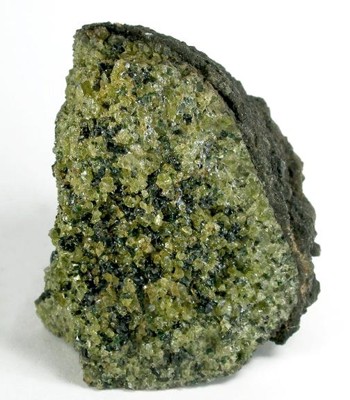
Fig: Forsterite
Identification
Forsterite’s gemstone variety known as peridot, is one of the most mispronounced of gemstone names. The crystal structure displayed to the left is based on the fosterite-tephroite crystal structure refinement. It is associated with igneous and metamorphic rocks and has also been found in meteorites.
- Formula mass: 140.691
- Color: Colorless, green, yellow, yellow green, white
- Crystal habit: Dipyramidal prisms often tabular, commonly granular or compact massive
- Fracture: Conchoidal
- Mohs scale hardness: 7
- Luster: Vitreous
- Streak: White
- Diaphaneity: Transparent to translucent
- Specific gravity: 3.21 – 3.33
- Optical properties: Biaxial (+)
Geologic occurrence
Forsterite-rich olivine is the most abundant mineral in the mantle above a depth of about 400 km (250 mi); pyroxenes are also important minerals in this upper part of the mantle.
Forsterite also occurs in dolomitic marble which results from the metamorphism of high magnesium limestones and dolostones. Nearly pure forsterite occurs in some metamorphosed serpentinites. Fayalite-rich olivine is much less common. Nearly pure fayalite is a minor constituent in some granite-like rocks, and it is a major constituent of some metamorphic banded iron formations.
Applications
Forsterite is being currently studied as a potential biomaterial for implants owing to its superior mechanical properties.
Association: Enstatite, plagioclase, phlogopite, magnetite, chromite, antigorite, dolomite, brucite, diopside, corundum, amphiboles, calcite, spinel, augite.
Information Source:
